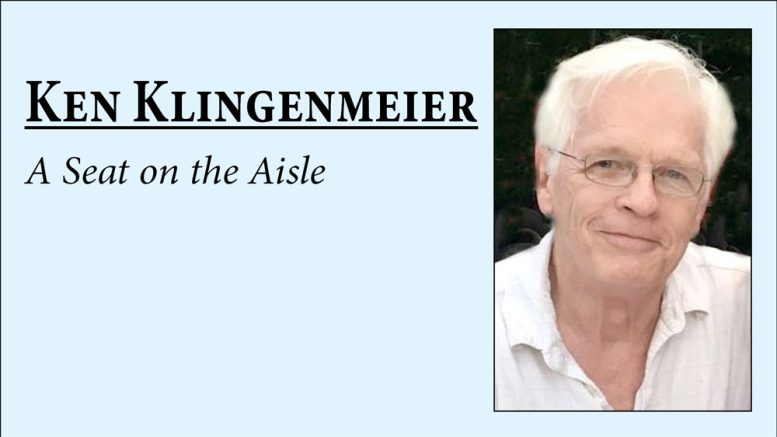By KEN KLINGENMEIER
A Seat on the Aisle
Metro Indianapolis, like all great cities, is made up of many distinct communities. By that, I do not mean neighborhoods or ethnic groupings or the like – I mean communities of interest or commerce.
There is the vast education community, made up of the universities and colleges – including the instructors, students, and support people. There is the business community, the political community, the visual arts, film-making, dance, and theatre communities. Each has a shared interest, and each is populated with people of diverse means, education and ambitions.
It is the theatre arts community that I have found most interesting personally.
Since I first joined it in 1994, it has experienced an exciting growth period. Where 30 years ago it consisted of two or three professional companies and a handful of smaller community theatre interests, Indy’s ever-enlarging scene now boasts four professional level theatres and dozens of community theatre companies, most of which have no permanent home and which must seek out venue space in a growing number of facilities. Venues such as The Cat in Carmel, The Theatre at the Fort at Fort Ben Harrison, the Allied Solutions Center for the Performing Arts in Carmel – which houses the Tarkington and the “black-box” Studio Theatre – the District Theatre, the Shelton Auditorium, the Indy Fringe/Indy Eleven theatre complex (newly renamed IF Theatre) and the Phoenix Cultural Centre all offer space for productions by companies without home theatres. These venues all charge a fee, of course.
What has been most surprising to me is the increasing number of non-professional – I’ll call them avocational – theatre companies. I believe no other city in the U.S. has as many of these as Indianapolis has. (I have been informed that Seattle has a similar situation.) We are talking about over 40 companies who “compete” for a finite number of patrons.
Incredibly, to meet the needs of personnel for the productions rendered by these groups, there are hundreds of Theatre People – actors, directors, designers, costumers, builders, musicians, technicians, and stagehands. These are people who have other jobs but who do the work for the love of theatre.
It is a very lively and immense community. One makes a good many friends by participating in this avocational community. Years ago, I actually seemed to know most of its members. Now, the numbers have stretched and expanded so much – I am lucky if, when I see a posting of a cast list for an upcoming show, I know more than two or three of the names. It truly is an amazing thing – the sheer number of people involved in our theatre community.
The question that arises is: Are there too many community theatre companies and groups? Many are struggling for survival. They all cannot be “successful.” But what constitutes “success”? As daunting as producing shows in this dense environment is – there seems to be an energy to meet the effort.
Let’s say we take a pad, draw a line down the middle, and label the two sides: Advantages and Disadvantages.
On the Advantages side, we have such things as artistic expression, artistic freedom, artistic satisfaction, variety, and control. Certainly, these points can be thought to be important factors. These groups are after all – in most cases – an artistic endeavor as opposed to a financial one.
On the Disadvantages side, we can list limited resources, cost of venues, reduced availability of good technicians, of talented performers, of inspired directors which having so many opportunities creates, the thinning of audience members, the general public’s “lack of taste” for what is often being staged – a product on occasion of the artistic freedom included above. And a fact that cannot be overlooked, the return on investment – the bottom line.
As a reviewer and former performer/director, I have sometimes seen a somewhat diluted quality in the offerings in the area. That’s not to say there isn’t plenty of really good stuff being done. It means – given the factors at play, there are lots of reasons it HAS to be that there is less of it.
All of this only matters if you notice these differences or are enduring the effects of these assorted shortcomings. I am in touch with the city’s theatrical past, and so I do think that in some ways things were BETTER a few years ago. Growth is good – but it is self-limiting.
On the other hand, saying that there is too much theatre in Indianapolis is akin to saying there were too many painters in Paris. It should all work itself out in the end.
Ken Klingenmeier is known in the pages of The Reporter for his reviews of local theater productions in the Greater Indianapolis area, which you can read on his blog, A Seat on the Aisle. He also occasionally opines on other topics.

